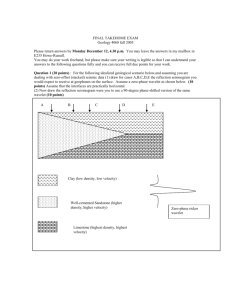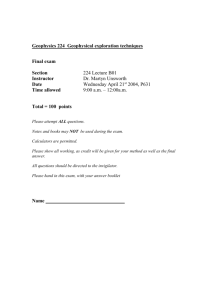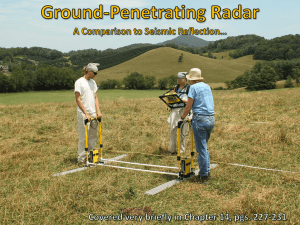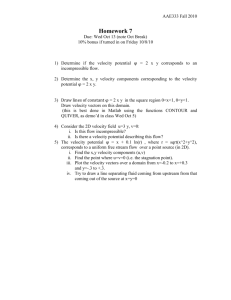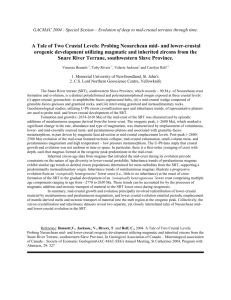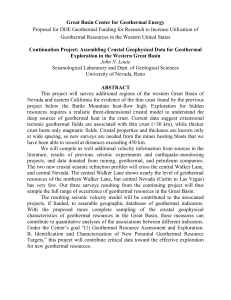Microsoft Word
advertisement
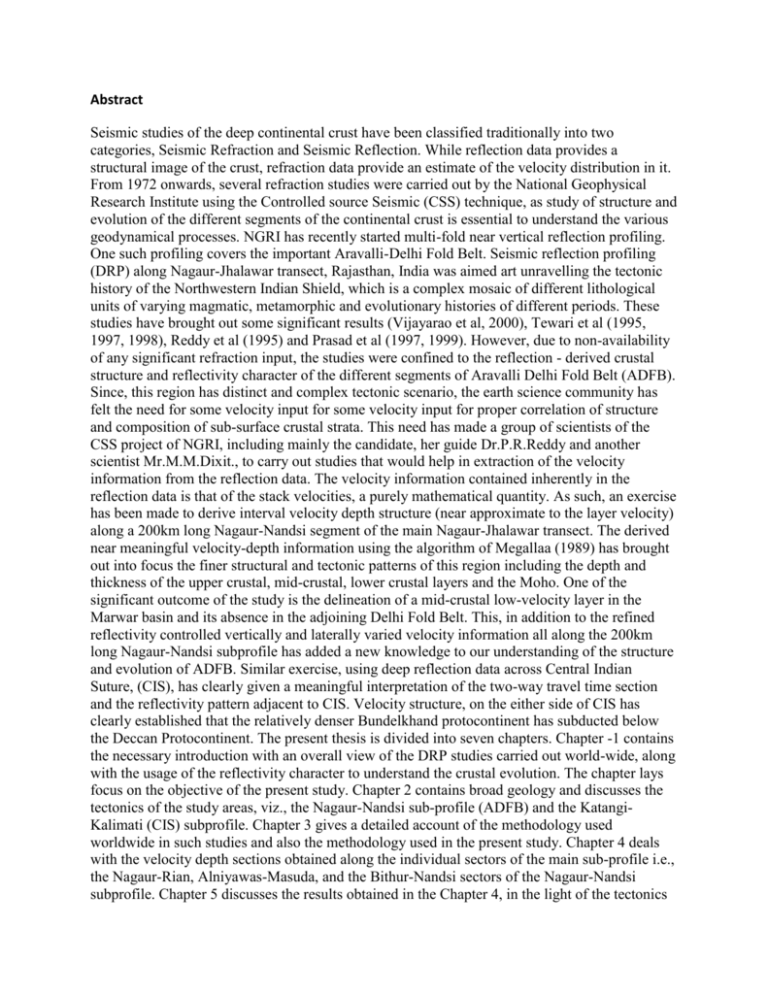
Abstract Seismic studies of the deep continental crust have been classified traditionally into two categories, Seismic Refraction and Seismic Reflection. While reflection data provides a structural image of the crust, refraction data provide an estimate of the velocity distribution in it. From 1972 onwards, several refraction studies were carried out by the National Geophysical Research Institute using the Controlled source Seismic (CSS) technique, as study of structure and evolution of the different segments of the continental crust is essential to understand the various geodynamical processes. NGRI has recently started multi-fold near vertical reflection profiling. One such profiling covers the important Aravalli-Delhi Fold Belt. Seismic reflection profiling (DRP) along Nagaur-Jhalawar transect, Rajasthan, India was aimed art unravelling the tectonic history of the Northwestern Indian Shield, which is a complex mosaic of different lithological units of varying magmatic, metamorphic and evolutionary histories of different periods. These studies have brought out some significant results (Vijayarao et al, 2000), Tewari et al (1995, 1997, 1998), Reddy et al (1995) and Prasad et al (1997, 1999). However, due to non-availability of any significant refraction input, the studies were confined to the reflection - derived crustal structure and reflectivity character of the different segments of Aravalli Delhi Fold Belt (ADFB). Since, this region has distinct and complex tectonic scenario, the earth science community has felt the need for some velocity input for some velocity input for proper correlation of structure and composition of sub-surface crustal strata. This need has made a group of scientists of the CSS project of NGRI, including mainly the candidate, her guide Dr.P.R.Reddy and another scientist Mr.M.M.Dixit., to carry out studies that would help in extraction of the velocity information from the reflection data. The velocity information contained inherently in the reflection data is that of the stack velocities, a purely mathematical quantity. As such, an exercise has been made to derive interval velocity depth structure (near approximate to the layer velocity) along a 200km long Nagaur-Nandsi segment of the main Nagaur-Jhalawar transect. The derived near meaningful velocity-depth information using the algorithm of Megallaa (1989) has brought out into focus the finer structural and tectonic patterns of this region including the depth and thickness of the upper crustal, mid-crustal, lower crustal layers and the Moho. One of the significant outcome of the study is the delineation of a mid-crustal low-velocity layer in the Marwar basin and its absence in the adjoining Delhi Fold Belt. This, in addition to the refined reflectivity controlled vertically and laterally varied velocity information all along the 200km long Nagaur-Nandsi subprofile has added a new knowledge to our understanding of the structure and evolution of ADFB. Similar exercise, using deep reflection data across Central Indian Suture, (CIS), has clearly given a meaningful interpretation of the two-way travel time section and the reflectivity pattern adjacent to CIS. Velocity structure, on the either side of CIS has clearly established that the relatively denser Bundelkhand protocontinent has subducted below the Deccan Protocontinent. The present thesis is divided into seven chapters. Chapter -1 contains the necessary introduction with an overall view of the DRP studies carried out world-wide, along with the usage of the reflectivity character to understand the crustal evolution. The chapter lays focus on the objective of the present study. Chapter 2 contains broad geology and discusses the tectonics of the study areas, viz., the Nagaur-Nandsi sub-profile (ADFB) and the KatangiKalimati (CIS) subprofile. Chapter 3 gives a detailed account of the methodology used worldwide in such studies and also the methodology used in the present study. Chapter 4 deals with the velocity depth sections obtained along the individual sectors of the main sub-profile i.e., the Nagaur-Rian, Alniyawas-Masuda, and the Bithur-Nandsi sectors of the Nagaur-Nandsi subprofile. Chapter 5 discusses the results obtained in the Chapter 4, in the light of the tectonics of the study area. The results obtained by earlier researchers are compared with the present results and a broad comparison of the results obtained elsewhere in the world are also presented so as to improvise our understanding of the tectonic evolutionary patterns. Chapter 6 focusses the attention on the other study area, viz., the Central Indian Suture (CIS). It discusses the results obtained and presents a possible evolutionary model for the region. Chapter 7 gives major results/conclusions and their significance.
